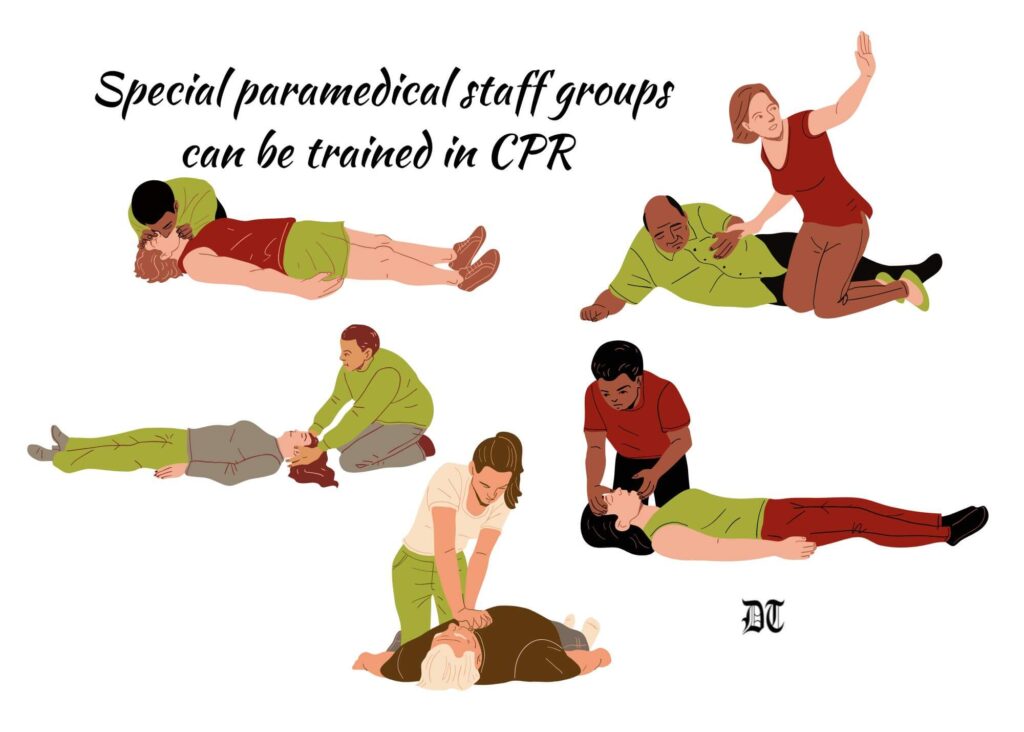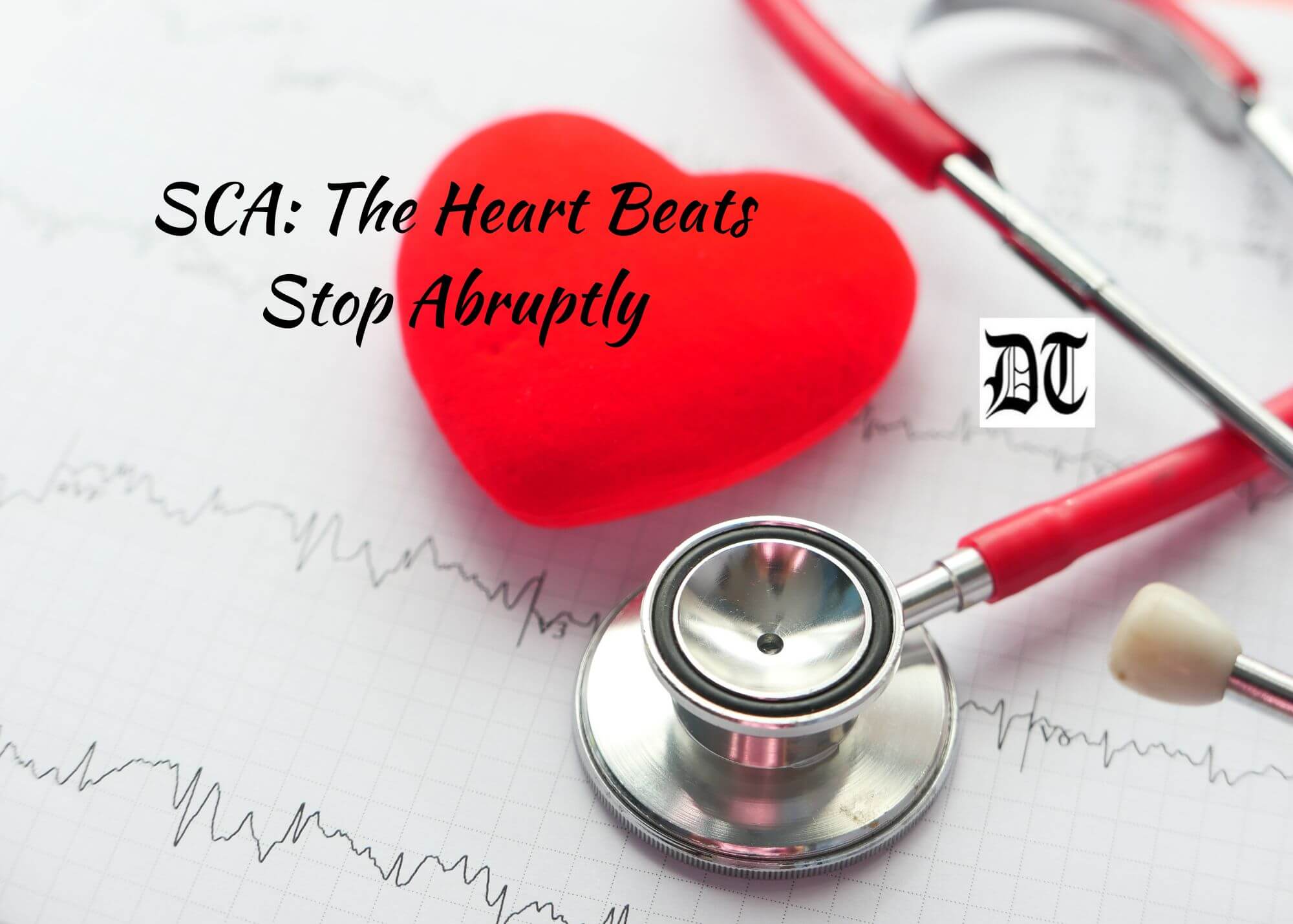Reading Time: 3 minutes
Sudden Cardiac Arrest (SCA) is different from a heart attack. In SCA there’s an electrical problem in the heart. The heart stops beating abruptly, without warning and if the heart is not electrically shocked within minutes, death occurs. In case of a heart attack there is a plumbing problem in the heart. Baishali’s report shows the light.
On December 7, 2004, Brazilian striker Cristiano Junior died in Bangalore during a match following Sudden Cardiac Arrest (SCA). In a similar case Sandipta Chatterjee, age 34, an anchor with ABP Ananda, died in Kolkata following a cardiac arrest on a fateful evening of Sunday, December 3, 2012. She had taken ill the previous day and was admitted to a Kankurgachhi Nursing Home, where she passed away. SCA has caused a number of deaths with people all over the world losing their loved ones in a helpless predicament. In the US, SCA accounts for 250,000 to 450,000 deaths per year. Globally, about 1000 people die of SCA everyday.
SCA is sudden, time and mode is unexpected and occurs to people, who may or may not be known to have any cardiac disease. It normally follows the pattern of dizziness, blackout and death. It has been found that people with history of heart attack, Hypertrophic Cardiomyopathy, Dilated Cardiomyopathy, Myocarditis, ARVD, Aortic stenosis, WPW syndrome, Coronary artery anomalies, Brugada & Long QT syndrome, Inadequately operated congenital heart disease, Eisenmenger’s syndrome, Electrolyte abnormalities, Proarrhythma from anti-arrhythmic drugs effects and that of Cocaine abuse are predisposed to SCA.
SCA is very also different from a heart attack.
SCA is very also different from a heart attack. In SCA there occurs an electrical problem in the heart. The heart stops beating abruptly, without warning and if the heart is not electrically shocked within minutes, death occurs. Where as in case of a heart attack there is a plumbing problem in the heart. A blockage in blood vessel prevents blood flow to heart and lack of blood causes damage to the heart muscle and scar tissue. The treatment for SCA includes Cardioversion by electric shock and Cardiopulmonary Resuscitation or CPR till defibrillation is available.
All over the world, doctors are advocating the usage of CPR to avoid untimely death caused by sudden cardiac arrest. CPR is a first aid technique that can be used by anyone if someone is not breathing properly or if their heart has stopped. Chest compressions and rescue breaths keep blood and oxygen circulating in the body. Unfortunately in most cases, death occurs before the patient reaches the hospital as the awareness on CPR is still very low.
According to Dr. Suvro Banerjee, Senior Consultant Interventional Cardiologist at Apollo Gleneagles Heart Institutes, Kolkata, “CPR is necessary when someone gets cardiac arrest. The definite treatment for cardiac arrest is electrical cardioversion done by external defibrillators. In arrests occurring out of hospital, defibrillators are not easily available and therefore the respiration and circulation of the patient have to be maintained artificially till it is available or the patient is shifted to an ambulance or hospital. This is done by cardiac message (chest compression) and mouth to mouth breathing (Cardiopulmonary resuscitation). Anyone may learn it. There are voluntary organisations which impart training. Many hospitals impart training as well.”
Europe, on the other hand, has very high awareness about CPR, …

Europe, on the other hand, has very high awareness about CPR, informs Dr. Prithwis Banerjee, a Consultant Cardiologist working in UK. “At least 60 per cent of the population is aware of the therapy in Europe. The awareness has been built via media stories of causes and treatment of sudden death and by regulations of the Department of Health that says that doctors must have training in CPR in order to practice. In Europe the main drivers of this are paramedics (ambulance personnel) but training in CPR is mandatory for all qualified doctors and certification is required every year. The courses needed are called basic and advanced life support courses,” expatiates the UK based doctor.
As far India is concerned it is all about educating the people on what CPR does and how simple it is. “The media and social media could help but the process of education needs to come from an authentic source such as the national and state governments. The health department is best placed but eminent doctors should help in this process and campaigns need to be run by a variety of organisations to popularise and demystify it. It is similar to that of starting an anti smoking campaign. Special paramedical staff groups can be trained in CPR (academy) and they in turn can spread awareness and training others,” suggests Dr. Prithwis Banerjee. “It is a pity that almost every Indian is aware of Amrutanjan but most have never heard of CRR,” he laments before adding, “CPR is life saving. I see many successful CPRs done by bystanders or family members that save individuals on a daily basis. Educating people will save lives including those of loved ones.”
It is said that knowledge is power, and sometimes it can give you the power of saving a life from impending death. Knowledge about CPR is imperative in today’s urban life and collective participation is necessary from all stakeholders to bring it in the domain of mass awareness.
Picture design Anumita Roy, Different Truths














